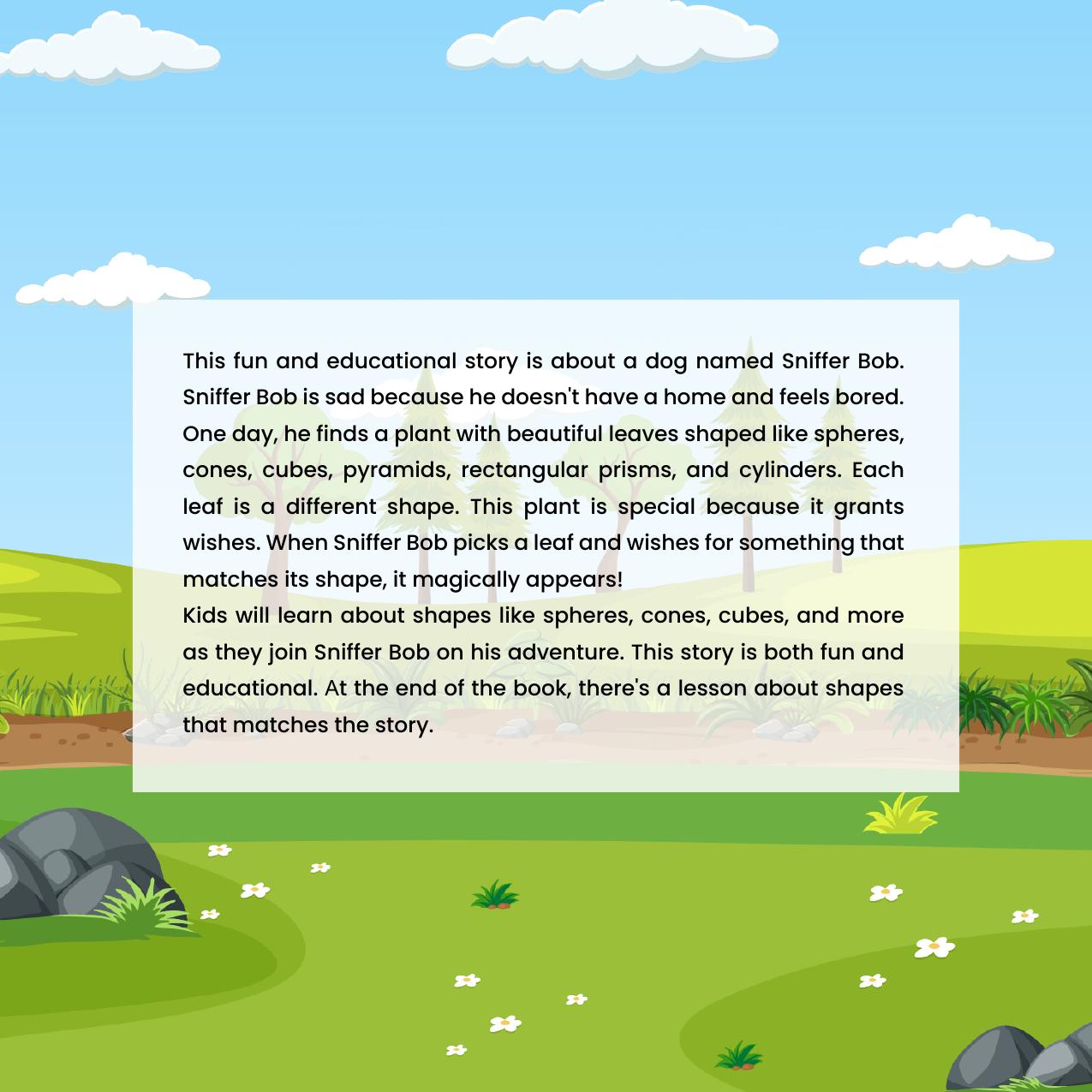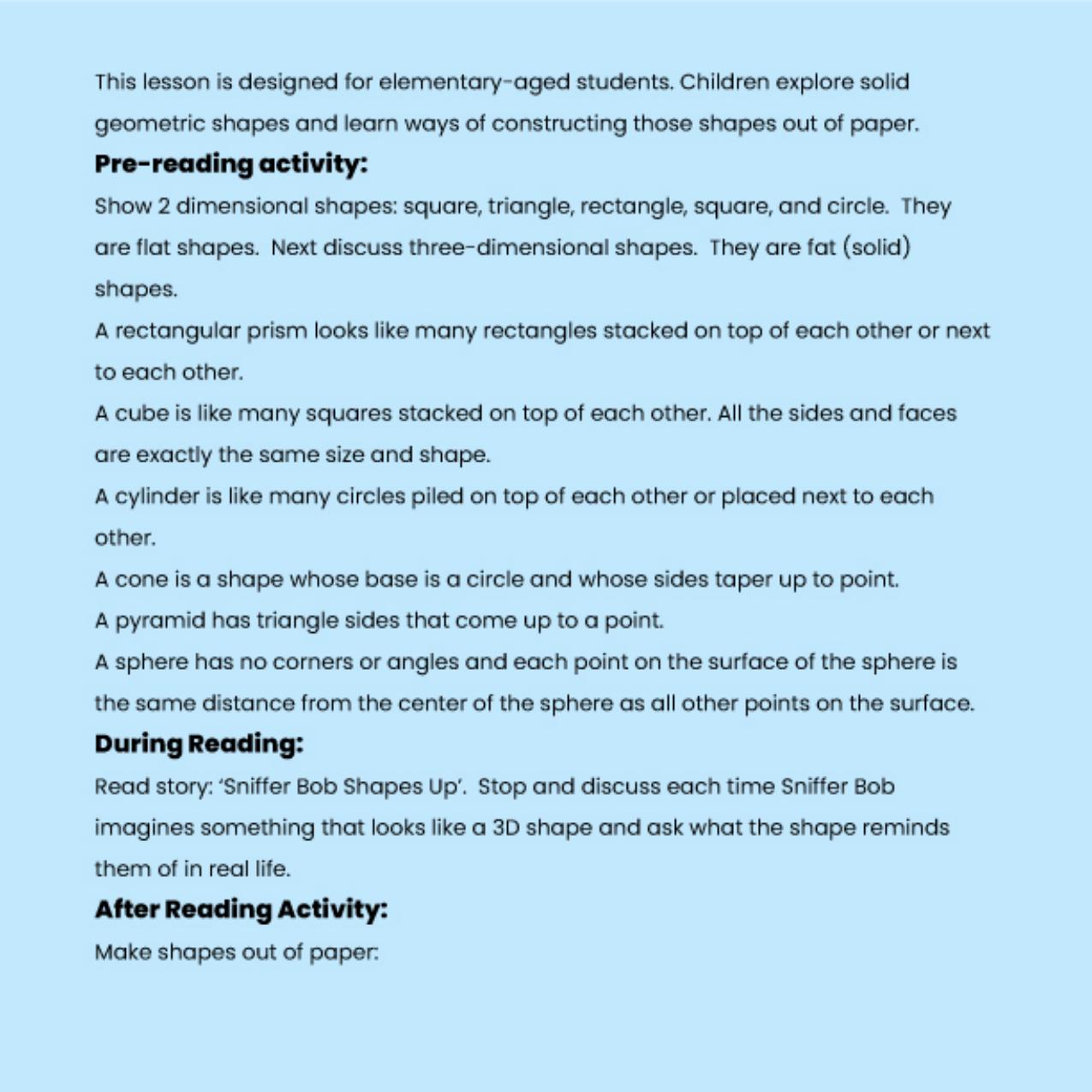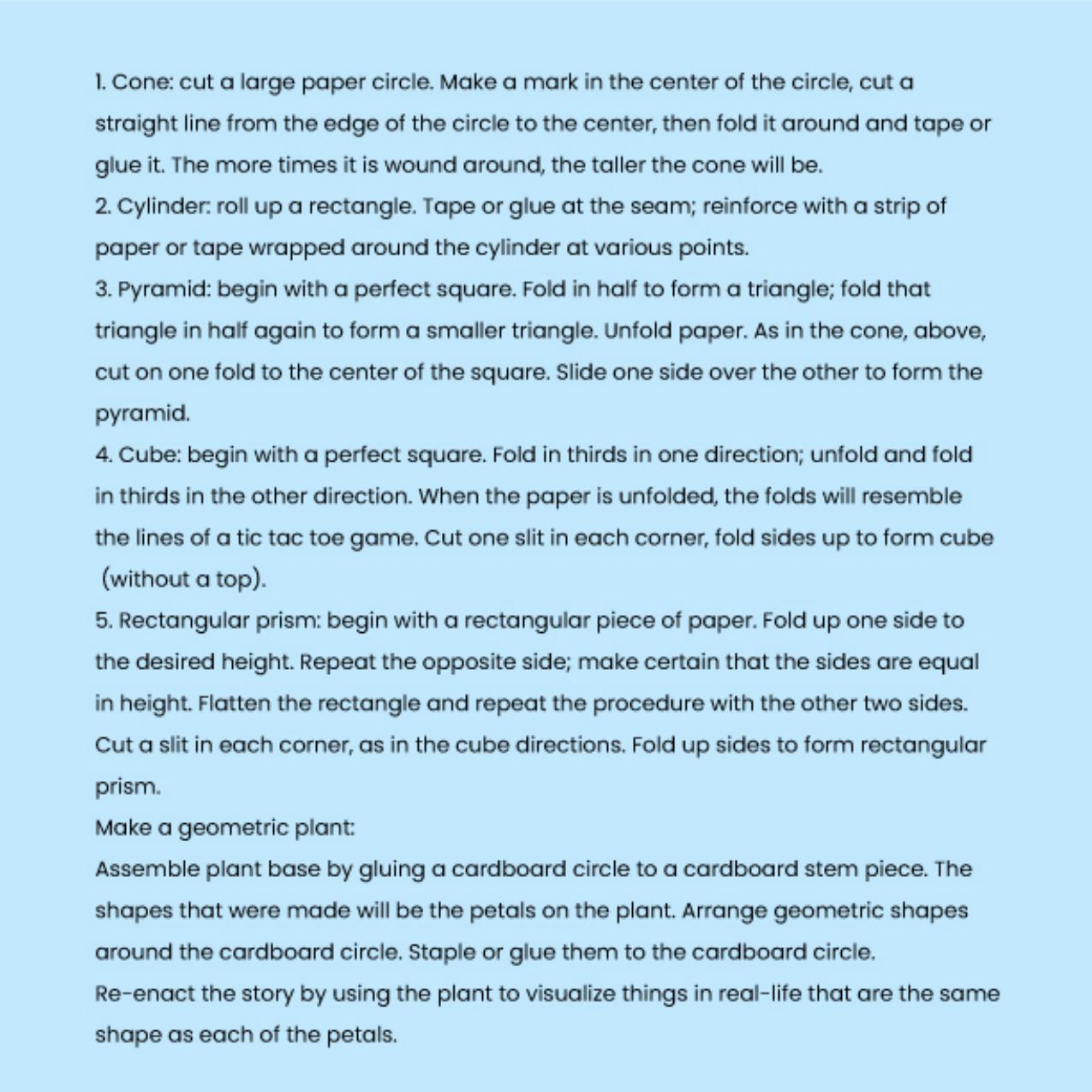


This fun and educational story is about a dog named Sniffer Bob. Sniffer Bob is sad because he doesn’t have a home and feels bored. One day, he finds a plant with beautiful leaves shaped like spheres, cones, cubes, pyramids, rectangular prisms, and cylinders. Each leaf is a different shape. This plant is special because it grants wishes. When Sniffer Bob picks a leaf and wishes for something that matches its shape, it magically appears! Kids will learn about shapes like spheres, cones, cubes, and more as they join Sniffer Bob on his adventure. This story is both fun and educational. At the end of the book, there’s a lesson about shapes that matches the story.
This lesson is designed for elementary-aged students. Children explore solid geometric shapes and learn ways of constructing those shapes out of paper.
Pre-reading activity:
Show 2-dimensional shapes: square, triangle, rectangle, square, and circle. They are flat shapes. Next, discuss three-dimensional shapes. They are solid shapes.
A rectangular prism looks like many rectangles stacked on top of each other or next to each other.
A cube is like many squares stacked on top of each other. All the sides and faces are exactly the same size and shape.
A cylinder is like many circles piled on top of each other or placed next to each other.
A cone is a shape whose base is a circle and whose sides taper up to a point.
A pyramid has triangle sides that come up to a point.
A sphere has no corners or angles and each point on the surface of the sphere is the same distance from the center of the sphere as all other points on the surface.
During Reading:
Read story: ‘Sniffer Bob Shapes Up’. Stop and discuss each time Sniffer Bob imagines something that looks like a 3D shape and ask what the shape reminds them of in real life.
After Reading Activity:
Make shapes out of paper.
- Cone: Cut a large paper circle. Make a mark in the center of the circle, cut a straight line from the edge of the circle to the center, then fold it around and tape or glue it. The more times it is wound around, the taller the cone will be.
- Cylinder: Roll up a rectangle. Tape or glue at the seam; reinforce with a strip of paper or tape wrapped around the cylinder at various points.
- Pyramid: Begin with a perfect square. Fold in half to form a triangle; fold that triangle in half again to form a smaller triangle. Unfold paper. As in the cone, above, cut on one fold to the center of the square. Slide one side over the other to form the pyramid.
- Cube: Begin with a perfect square. Fold in thirds in one direction; unfold and fold in thirds in the other direction. When the paper is unfolded, the folds will resemble the lines of a tic tac toe game. Cut one slit in each corner, fold sides up to form cube (without a top).
- Rectangular prism: Begin with a rectangular piece of paper. Fold up one side to the desired height. Repeat the opposite side; make certain that the sides are equal in height. Flatten the rectangle and repeat the procedure with the other two sides. Cut a slit in each corner, as in the cube directions. Fold up sides to form rectangular prism.
Make a geometric plant:
Assemble plant base by gluing a cardboard circle to a cardboard stem piece. The shapes that were made will be the petals on the plant. Arrange geometric shapes around the cardboard circle. Staple or glue them to the cardboard circle.
Re-enact the story by using the plant to visualize things in real life that are the same shape as each of the petals.


